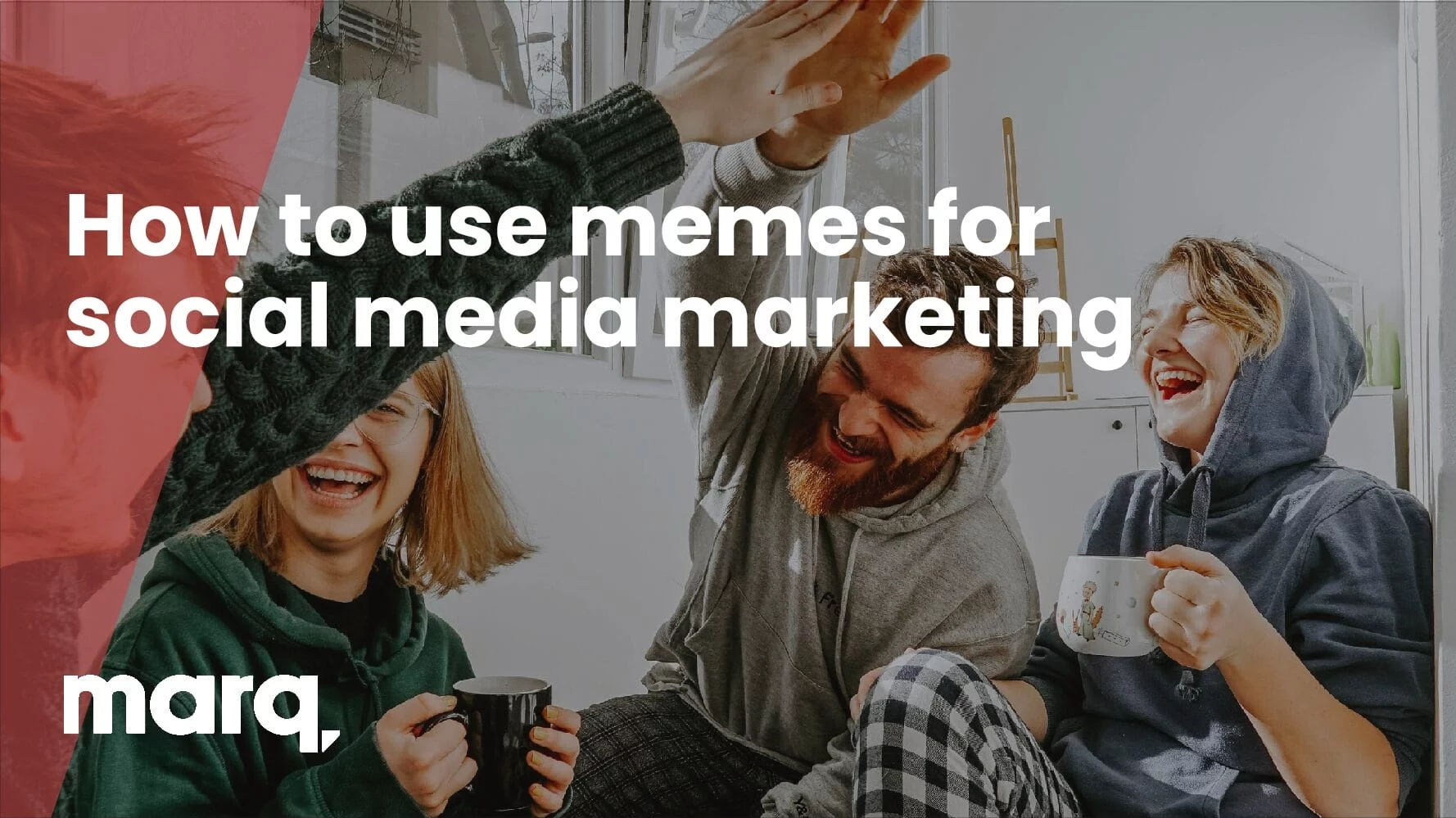Memes are one of the most popular forms of expression online, and for good reason. First of all, they go hand-in-hand with just about any social media platform, which helps them spread like wildfire. Second, people have fairly short attention spans online, so the concise nature of memes makes them a perfect medium for quick consumption.
Related: How to create social media posts that get noticed
Memes are like an inside joke everyone wants to be in on. They’re a fun way to reflect on current events, clichés and trends. Memes are popular among brands because they engage audiences and drive traffic. If you’re thinking about using memes in your social media marketing, this guide will help you get up to speed.
What’s a meme?
The term itself was coined several decades ago by the evolutionary biologist Richard Dawkins. In his book The Selfish Gene, it refers to the way an idea spreads from person to person within a culture. Like genes, they replicate and change as they spread. Some of his examples include catchphrases, melodies, fashion, and even the technology of building arches.
Today, we understand the concept a little differently, thanks to the internet. Memes are still representations of ideas, and they still spread from person to person, but they involve an element of human creativity.
Simply put, a typical meme is an image or photograph accompanied by a caption that’s funny, ironic or entertaining. Although memes have many different permutations, effective memes are instantly recognizable.
Early internet memes
Before the days of social media, memes were shared via email, blogs and forums. One of the first memes was the Dancing baby, which was so popular in the 90s, it made a cameo on the TV show Ally McBeal. Another popular early meme was the Hampster dance, a webpage born as the result of a competition between two sisters to generate the most web traffic.
Memes can grow and evolve, and they don’t necessarily have a short shelf life. For instance, the LOLcats meme is still around—ancient by internet standards. Rickrolling was huge a decade ago and has mostly been put to bed, but Westworld’s creators recently decided to post a video containing spoilers for its next season… which turned out to be fake. Another enduring meme is a video clip from the movie Downfall, which chronicles Hitler’s last days and has inspired numerous parodies—usually by pairing the serious scene with a frivolous topic.
Other types of memes
- Rage comics. These memes use a library of pre-made cartoon faces (or “rage faces”) to express a particular emotion. Usually, they humorize a relatable experience. Because they use facial expressions, they’re easy to identify and understand. Examples include the Trollface, Like a Boss, Cereal Guy, and Forever Alone Guy.
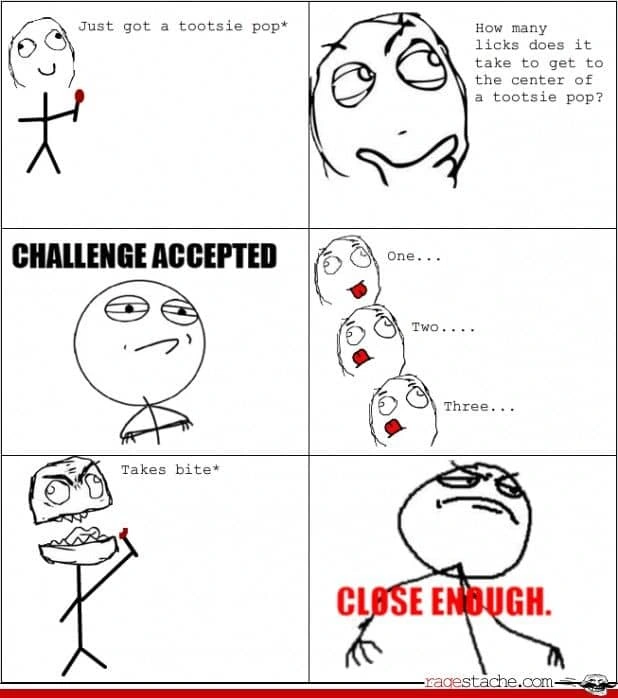
The iconic Tootsie Pop ad reimagined as a rage comic
- Image macros. Probably the most recognizable type of meme, these are images that feature a witty caption or catchphrase. Thanks to meme generator sites like I Can Has Cheezburger, most of these memes use a bold, white Impact font with a black border (like the header image of this post).
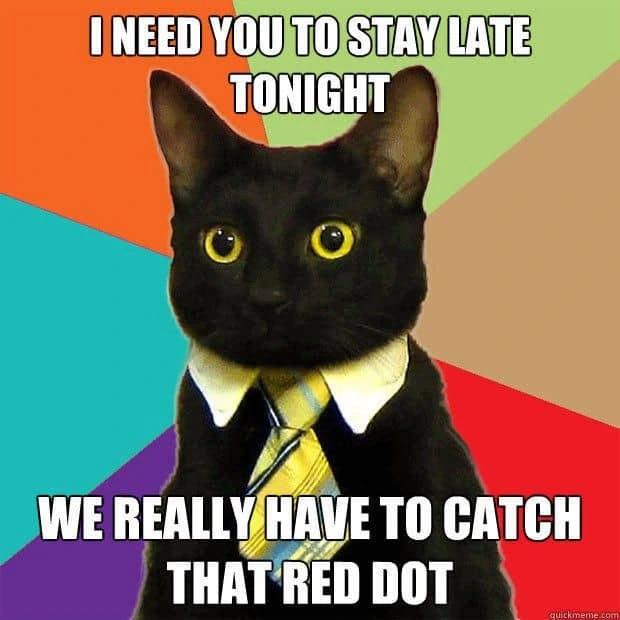
The internet is powered by humorous pictures of cats.
- Trending memes. This type of meme bursts onto the scene, feels ubiquitous for a few weeks or months, then disappears and nobody ever mentions it again. They’re often tied to current events, news, popular culture and trends.
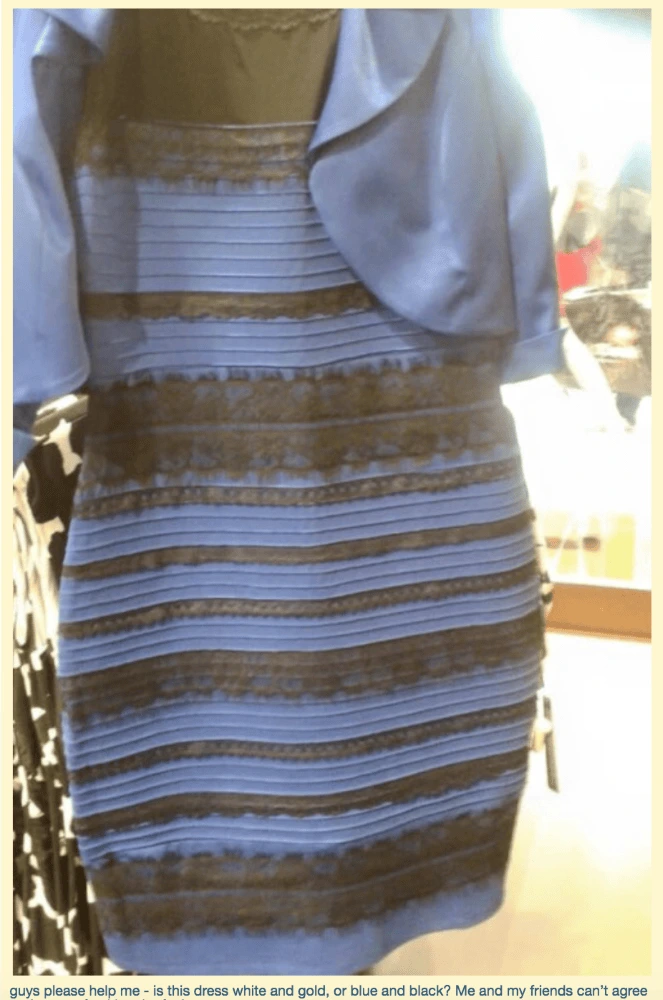
Ahh, yes, the “Yanny vs. Laurel” of its generation. (2015, that is.)
- Exploitables. Exploitables come in various forms, including single-pane or multi-pane comics, but the central idea remains the same: a template that’s easy to modify into new permutations of a joke. Four-pane comics are an especially popular exploitable format.
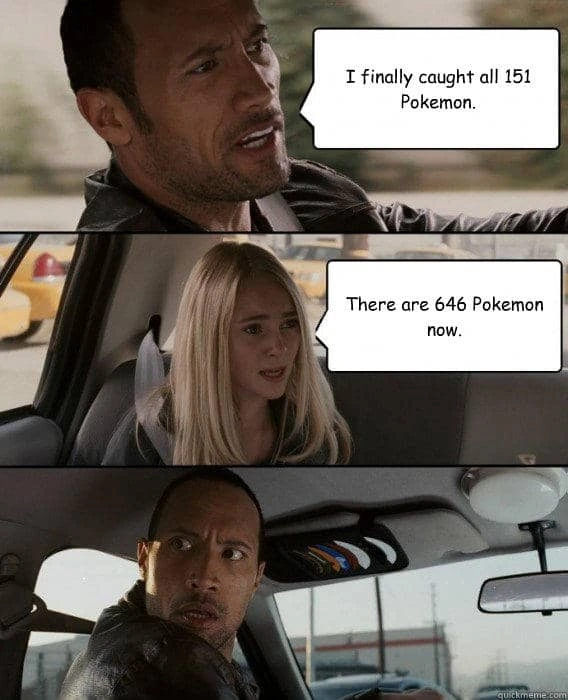
About 802 now, if you’re still counting.
- Copypasta. Unlike many memes, copypasta isn’t visual. Rather, it’s usually a section of text that gets copied and shared over and over. It’s most commonly used as a response in forum discussions and social media comment threads.
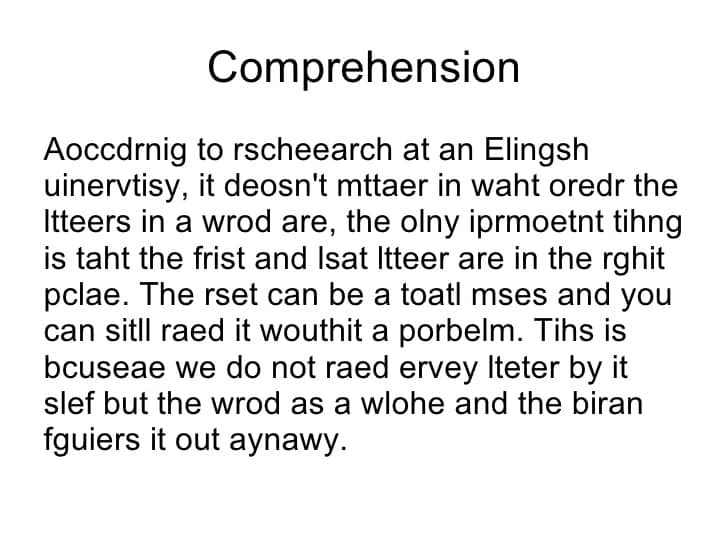
Since most recent examples are wildly inappropriate for this blog,here’s an oldie but a goodie.
The rules of using memes as a marketer
Like any type of humor, using memes as a brand poses a certain amount of risk. You don’t want a poorly constructed or offensive joke to confuse or drive away your audience. So, before you start spamming your social media feeds, review these simple guidelines.
- Decide whether memes are appropriate for your brand. Memes are predominantly created and shared by younger audiences. To get the joke, you have be clued into the broader online discussion. If your marketing campaign is aimed at an older audience, they might not follow memes or get the reference. Thus, your attempts at humor could fall flat.
Also, consider brand voice. If your brand uses a serious tone, memes probably won’t help you establish credibility or authority. Research your audience and review your brand guidelines before introducing memes into your strategy. - Don’t overdo it. In a way, memes function like a good jump scare in a horror movie. They can be incredibly effective 1) when used sparingly and 2) when the timing is right. Using them all the time will diminish their impact and bore your audience.
- Memes can’t replace original content. Memes can be a great addition to your content, but you can’t rely on them all the time. They’re there to amplify your message to a broader audience. All memes and no content is like eating dessert but never actually having lunch—fun at first, but eventually, you’ll want something more substantial to chew on.
- Be thoughtful. Memes can easily backfire if you’re not careful about the tone you use to get your point across. Sarcasm and irony don’t always translate well via text, which can cause confusion or backlash among your audience, despite having the best intentions.
Additionally, make sure you research and understand the origins of a meme before you use it. It might have problematic connotations (like racism, sexism or ableism) that you don’t want associated with your brand. Know Your Meme (potentially NSFW) is a great resource if you want to learn more about a particular meme.
3 examples of brands using memes on social media
There’s a veritable boatload of brands using memes effectively out there, but here are a few of our favorites.
- Seamless. A few years ago, food delivery service Seamless introduced a meme to join the buzz surrounding the Oscars. This one took the form of a hashtag; you can still find them by searching #OscarNomNoms. The idea was to use puns and wordplay to parody popular movie titles. We especially loved made-up titles like “Gravitea,” “American Mussels” and “The Wolf of Waffle Street.”
* Nickelodeon. Nickelodeon uses clips from its own cartoons to create memes, then posts them to Twitter and Instagram. Usually, they focus on issues younger viewers can relate to—such as going to school, having an annoying sibling, or enjoying time alone when parents aren’t around.
* Hipchat. In a move that seems like it never should have worked, Hipchat brought an existing meme into the real world by putting it up on billboards. Even though it’s a clear example of offline marketing, the digital search for HipChat rose 300%! In this case, being bold definitely paid off.
Key takeaway
Although individual ones come and go, memes are here to stay. They’re easy to create and even easier to share. From a marketer’s point of view, they’re inexpensive and have the potential to go viral. Still, they require you to research their content, your audience, and your brand. When all these elements align, memes can spread your brand message to a broader audience than ever before. To the moon! ???
